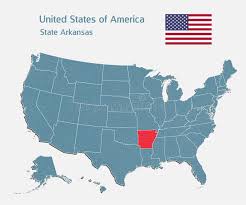In the United States there is more space where nobody is, than anybody is. This is what makes America what is.
Gertrude Stein, The Geographical History of America, 1936
Executive Summary
The document covers rental trends and policy changes in San Francisco and other major U.S. metropolitan areas, focusing on the past 5 to 10 years. Here are the key points:
- Ordinance on Revenue Management Software: San Francisco’s Board of Supervisors passed a rule banning the sale or use of revenue management software for rental housing. Violations may result in penalties of up to $1,000 per unit, per month.
- Rental Trends in San Francisco:
- Over the past 10 years, San Francisco rents have seen very low growth compared to other California cities and the national average.
- Over the last 5 years, rents in San Francisco have even declined, while cities like the Inland Empire and San Diego experienced significant increases.
- Migration trends also play a role, with San Francisco seeing a population decline of 7.5% since 2019, while areas like Dallas, Austin, and Phoenix saw growth.
- Impact of COVID-19: Post-COVID, out-migration from San Francisco increased, leading to higher vacancy rates and a drop in rental values. The rental market recovery has been slow.
- Rent as an Economic Output: Recent research suggests rent should be seen as an output, not just an input cost. High rents reflect broader economic factors, such as demand and regional growth, rather than simply property values.
- Inflation Comparison: San Francisco has experienced price increases, but in the last 5 years, inflation has lagged behind the national average, despite continued price increases due to consumer inflation.
The document highlights the significant regional variations in rent trends and the broader socioeconomic factors affecting housing affordability.
Overview
The San Francisco Board of Supervisors has passed an ordinance banning the sale or use of revenue management software for the city’s rental housing. If the ordinance is enacted, multifamily owners, operators or vendors that sell or use revenue management software in San Francisco could face penalties of up to $1,000 per violation, plus damages, restitution and attorneys’ fees. Usage violations would be counted per unit and month of use.
To understand this further, we analyzed historic rent changes in large metropolitan areas in the United States over the past 10 years to understand on an absolute and relative basis, how they have changed with regards to rental costs. In addition, we overlay the US Consumer Price Inflation to understand how expensive other goods and services in the basket have been.
Finally we isolate these factors for San Francisco and try to understand how rental cost inflation relates to overall consumer inflation and affordability. Our sources for this are the US Census Bureau, Bureau of Labor Statistics and Beekin Same-Store rent indices.
Why this index
The Beekin same-store rental index measures the change in rent for the same property getting listed for rent again and not seasonally adjusted. Due to the repeat-sales method it closely resembles other indices like Case-Shiller indices for house prices and CPI for inflation and is best used for empirical analysis and modeling.
Rental performance across states and top cities
Firstly, we shortlisted the top-20 cities (metropolitan statistical areas) by population, to control for high density of rental housing. For these cities, we looked at both a 5 and 10 year change in absolute rental index value.
We overlaid the corresponding numbers for the state to understand if the cities were more or less expensive than the state-level rental indices. For larger states like Texas, California with multiple large MSAs, we see divergence in city level rent changes versus the individual state over both a 5 and 10 year period. For other states with 1 large MSA in the state, these returns start to converge.
For all trends, the index observation is between January 2015 to July 2024 (approximated 10 year range) and July 2019 to July 2024 (5 year range). This is due to data limitations as Beekin indices begin in January 2015. Heres what we found
- San Francisco rents did not get more expensive: saw very low rent growth over the past 10 years and negative in the past 5 years. Amongst the top-4 largest MSAs in California, Inland Empire and San Diego saw rents grow by more than 50% in the 10 years and 36% and 29% in the 5 years. This was higher than the California state average of 34% and 15% change in rent levels.
- The MSAs with high rent growth were those with migration: Across the top-20 MSAs the following ones had higher rent growth than the US national rental growth and their respective state rent growth: (Florida) Miami and Tampa and (California) Inland Empire and San Diego.
- Amongst the states with top-20 MSAs – Florida, Arizona and Washington states had higher than US National Rent growth in the period.
Figure 1: San Francisco, CA Rent Trailed California and National Average

Migration
From 2019 onwards, U.S. cities such as San Francisco, Los Angeles, Dallas, Austin, Phoenix, Tampa, Miami, and Atlanta have experienced notable shifts in migration patterns, reflecting broader economic and social trends.
San Francisco and Los Angeles have seen significant outflows of residents. According to U.S. Census Bureau data, San Francisco’s population declined by approximately 7.5% between 2019 and 2023, losing over 65,000 residents. Los Angeles experienced a smaller but still notable decrease of around 3%, equating to a loss of roughly 120,000 residents. Affordability was a driving reason for this and while home price affordability was stretched, rental levels increased in areas like Inland Empire and fell drastically in San Fracisco and Oakland areas.
Conversely, Dallas and Austin in Texas have been major beneficiaries of this migration. Austin saw a population increase of about 10% from 2019 to 2023, with more than 200,000 new residents. Dallas grew by approximately 6%, adding around 80,000 residents. These cities have attracted new residents due to their lower cost of living, vibrant job markets, and growing tech sectors.
Phoenix has also seen substantial growth, with a population increase of about 8%, adding over 150,000 residents between 2019 and 2023. The city’s affordability, warm climate, and expanding job market have made it a desirable destination for many.
In the southeastern U.S., Tampa, Miami, and Atlanta have experienced similar growth trends. Tampa saw its population increase by around 7%, adding approximately 50,000 new residents, driven by its affordable cost of living and favorable climate. Miami experienced a growth of about 4%, adding nearly 60,000 residents, as it attracted both domestic and international migrants, particularly those seeking a vibrant cultural scene and favorable tax environment. Atlanta grew by roughly 5%, adding about 80,000 residents.
Rent Inflation pre and post-COVID for San Francisco and the US
Visually, we can see below that San Francisco in particular had out migration post COVID-19 resulting in a drop in rental values observed in the city due to higher than average vacancy rates. This persisted and the market recovery has not been strong.
Figure 2: Comparison of Rental Trends over 10 years (2014-2024), not seasonally adjusted
Did San Francisco Get More Expensive For Consumers Overall?
Using US CPI data for the past 10 years we compare cost of goods (including shelter) for the entire country and San Francisco over the period below.
As can be seen, San Francisco has seen a rising price trend over the 10 year period but in the recent 5 years it has lagged the country. So prices have increased due to inflation but less than the rest of the country.
Figure 3: Comparison of Consumer Price Inflation (2014-2024), not seasonally adjusted
So is Rent an Input or Output?
Recent research has increasingly framed rent not as a mere input cost but as an output of broader economic and social dynamics. This evolving perspective has significant implications for housing markets, urban development, and economic inequality.
Traditionally, rent was seen as an input—a fixed cost borne by businesses and households, similar to utilities or wages. This view aligns with classical economic theories, such as those articulated by David Ricardo, where rent is considered a cost of production. However, recent studies challenge this notion, arguing that rent is more accurately an output—a reflection of the complex interplay between economic forces, demand, and policy.
Urban economist Richard Florida, in his work on the “New Urban Crisis,” emphasizes that rent levels are not simply a function of property values or maintenance costs. Instead, they are the result of external factors such as local economic growth, demographic trends, and the availability of amenities . In cities experiencing rapid economic expansion, like San Francisco or New York, high rents emerge as an output of intense demand coupled with insufficient housing supply. This view is supported by research from the Joint Center for Housing Studies at Harvard University, which notes that housing costs, particularly rents, are strongly influenced by regional economic conditions and housing policies .
Moreover, the output perspective on rent sheds light on the impact of income inequality and economic stratification on housing affordability. Research by economists such as Matthew Rognlie argues that rising income inequality exacerbates housing cost inflation, particularly in economically prosperous areas. Higher-income individuals can afford to pay more for housing, driving up rents and displacing lower-income residents . This dynamic is evident in tech hubs like Seattle and Austin, where the influx of well-paid tech workers has significantly increased housing costs, pushing out less affluent residents.
Understanding rent as an output rather than a static input shifts the policy focus towards addressing the underlying drivers of rent inflation. Solutions may include increasing housing supply through zoning reform, addressing income inequality, and enhancing urban planning strategies. This approach offers a more comprehensive understanding of the housing market and provides more effective tools for mitigating the affordability crisis .
Sources:
BLS, US CPI-U https://data.bls.gov/dataViewer/view/timeseries/CUUR0000SA0;jsessionid=57808E5FAB33BB138C33B615462C44CF
US Census Bureau, 2023 ACS
Beekin Recent Mover Indices


